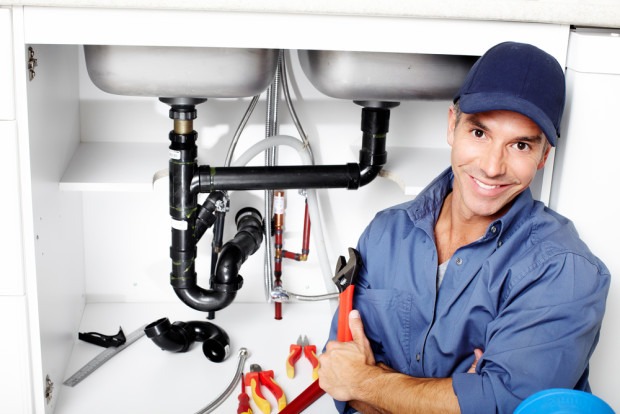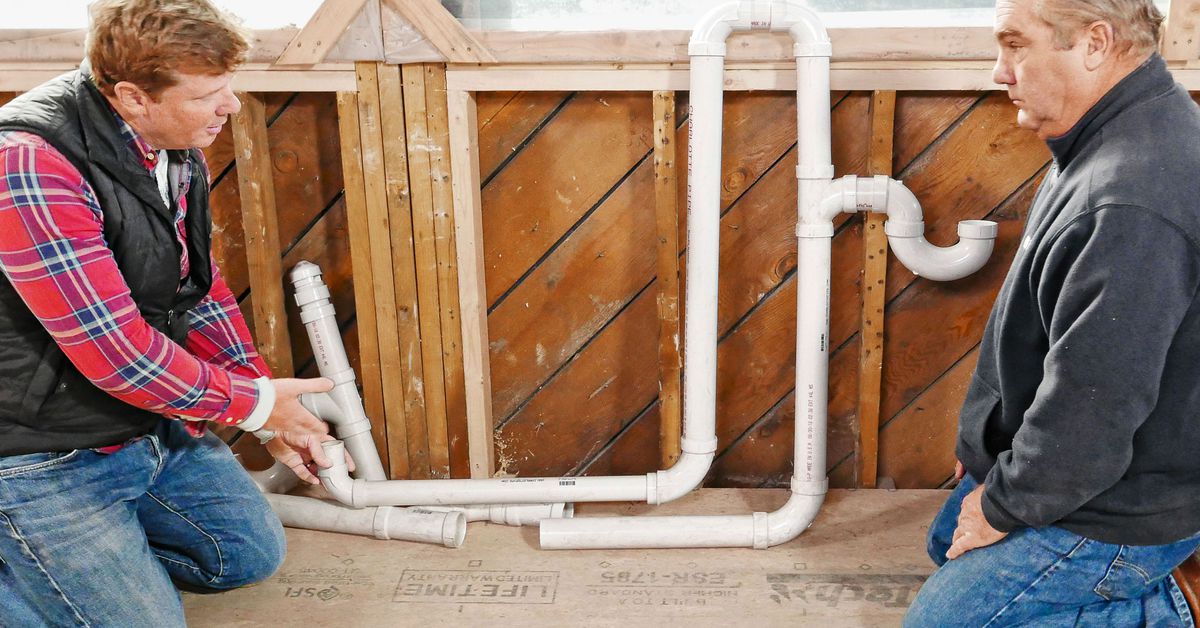Identifying And Dealing With Plumbing Sounds In Your Home
Identifying And Dealing With Plumbing Sounds In Your Home
Blog Article
Do you find yourself in search of tips concerning Why is My Home Making Strange Plumbing Noises?

To detect noisy plumbing, it is very important to determine very first whether the undesirable sounds happen on the system's inlet side-in other words, when water is turned on-or on the drainpipe side. Noises on the inlet side have actually differed causes: too much water pressure, worn shutoff and also faucet parts, incorrectly attached pumps or other home appliances, improperly positioned pipeline fasteners, as well as plumbing runs consisting of way too many tight bends or other limitations. Sounds on the drain side generally stem from bad place or, similar to some inlet side sound, a layout containing tight bends.
Hissing
Hissing noise that happens when a tap is opened a little usually signals excessive water pressure. Consult your local water company if you think this issue; it will certainly have the ability to inform you the water stress in your location and can install a pressurereducing valve on the incoming supply of water pipe if required.
Other Inlet Side Noises
Creaking, squeaking, scraping, snapping, as well as touching normally are triggered by the growth or tightening of pipelines, normally copper ones providing warm water. The noises happen as the pipes slide against loose fasteners or strike nearby house framing. You can commonly determine the area of the problem if the pipes are exposed; just follow the sound when the pipes are making noise. Probably you will discover a loose pipe hanger or an area where pipes lie so close to floor joists or other framing pieces that they clatter against them. Attaching foam pipe insulation around the pipes at the point of contact must correct the issue. Make sure bands as well as hangers are protected as well as offer sufficient support. Where possible, pipe fasteners must be connected to enormous structural elements such as foundation wall surfaces rather than to framing; doing so reduces the transmission of vibrations from plumbing to surfaces that can amplify and also transfer them. If attaching fasteners to framework is unavoidable, wrap pipelines with insulation or various other durable material where they contact bolts, and also sandwich completions of new bolts in between rubber washers when installing them.
Dealing with plumbing runs that deal with flow-restricting limited or various bends is a last option that should be taken on just after speaking with an experienced plumbing service provider. Regrettably, this scenario is relatively common in older residences that might not have been built with interior plumbing or that have seen several remodels, specifically by novices.
Chattering or Shrilling
Intense chattering or shrieking that occurs when a shutoff or tap is turned on, which normally disappears when the installation is opened completely, signals loosened or faulty internal components. The service is to change the valve or faucet with a brand-new one.
Pumps and home appliances such as cleaning machines as well as dish washers can transfer motor sound to pipes if they are improperly connected. Link such items to plumbing with plastic or rubber hoses-never stiff pipe-to isolate them.
Drainpipe Noise
On the drain side of plumbing, the chief goals are to get rid of surfaces that can be struck by falling or rushing water as well as to protect pipelines to contain unavoidable noises.
In new building, bath tubs, shower stalls, commodes, and also wallmounted sinks and basins should be set on or against durable underlayments to decrease the transmission of noise via them. Water-saving commodes and also taps are much less loud than conventional models; install them instead of older types even if codes in your area still permit using older fixtures.
Drainpipes that do not run vertically to the basement or that branch into horizontal pipeline runs sustained at flooring joists or various other mounting existing specifically frustrating sound troubles. Such pipelines are big enough to radiate considerable vibration; they likewise bring considerable quantities of water, that makes the scenario even worse. In brand-new building and construction, define cast-iron soil pipes (the large pipes that drain toilets) if you can afford them. Their massiveness contains much of the noise made by water passing through them. Also, avoid routing drainpipes in walls shared with bedrooms and rooms where people gather. Wall surfaces having drains need to be soundproofed as was defined previously, utilizing dual panels of sound-insulating fiberboard and wallboard. Pipelines themselves can be covered with unique fiberglass insulation created the purpose; such pipes have an impervious vinyl skin (sometimes containing lead). Results are not always satisfactory.
Thudding
Thudding noise, frequently accompanied by shuddering pipelines, when a tap or home appliance valve is shut off is a condition called water hammer. The noise and vibration are caused by the reverberating wave of stress in the water, which instantly has no area to go. Occasionally opening a valve that releases water rapidly right into an area of piping including a constraint, elbow joint, or tee fitting can generate the exact same problem.
Water hammer can normally be cured by mounting fittings called air chambers or shock absorbers in the plumbing to which the problem shutoffs or faucets are attached. These gadgets enable the shock wave created by the halted circulation of water to dissipate in the air they have, which (unlike water) is compressible.
Older plumbing systems may have brief vertical areas of capped pipeline behind walls on tap runs for the very same function; these can at some point full of water, reducing or ruining their effectiveness. The treatment is to drain the water supply completely by turning off the major water system shutoff as well as opening up all faucets. After that open the primary supply valve as well as shut the faucets individually, starting with the tap nearest the valve and finishing with the one farthest away.
If Your Plumbing is Making These Sounds, There’s a Problem
A Bang or Thump When You Turn Off a Faucet
If a loud bang or thump greets you each time your turn off running water, you likely have a water hammer. A water hammer occurs when the water velocity is brought to a halt, sending a shock wave through the pipe. It can be pretty jarring — even worse, damaging to your plumbing system. All that thudding could loosen connections.
Strange Toilet Noises
You’re so familiar with the sounds your toilet makes that your ears will be attuned to anything out of the ordinary. Fortunately, most unusual toilet noises can be narrowed down to just one of several problems.
Foghorn sound:
Open the toilet tank Flush the toilet When you hear the foghorn noise, lift the float to the top of the tank If you’re ambitious, you can remove the ballcock valve and disassemble it to replace the washer. Or you can more easily replace the ballcock valve entirely. This device is relatively inexpensive and available at most any hardware store.
Persistent hissing:
The hissing following a flush is the sound of the tank filling. It should stop once the tank is full. But if the hissing continues, it’s likely because water is leaking out of the tank. The rubber flap at the bottom of the tank can degrade, letting water slip through and into the bowl. That’s why the tank is refilling continuously. Fortunately, this is an easy fix:
Cut the water to the toilet by closing the shutoff valve on the water supply line. Flush the toilet to drain the tank. Disconnect the flapper Attach the new flapper Gurgling or bubbling:
Gurgling or bubbling suggests negative air pressure in the drain line, likely resulting from a clog. As air releases, it causes the water in the toilet to bubble. This could either be a minor issue or a major one, depending on the clog’s severity. Clogs can be caused by toilet paper or more stubborn obstructions such as tree roots. If you can’t work out the clog with a plunger, contact a professional plumber for assistance because a clog of this magnitude could lead to filthy and unsanitary sewage backups in your sink bathtub.

Do you like reading about Why Your Water Pipes Are Noisy and How To Shut Them Up? Post a short review directly below. We will be delighted to find out your opinion about this content. We hope to see you back again soon. Don't hesitate to set aside a second to promote this blog post if you liked it. Thanks so much for your time invested reading it.
Schedule An Appointment Report this page